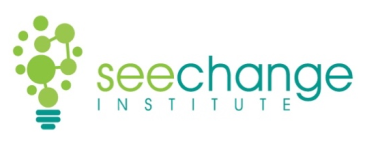Uplight
Conducting an Annual Voice of Energy Customer Survey
The Challenge
The energy landscape changed dramatically in the early 2020s, shaped by an unprecedented series of global, national, and local disruptions. COVID-19 redefined how we live and work in our homes; energy prices fluctuated; technology evolved rapidly; and climate-related disasters became more frequent and severe. Amid this instability, one question became increasingly urgent for utilities and energy providers: how are real-world events shaping the way people think about and engage with energy?
The Client
Uplight is a technology company that enables energy providers, ecosystem partners, and consumers to conserve, deploy, manage, and monetize energy resources. A market leader in customer energy engagement and grid-edge technology, they focus on helping utilities deliver more personalized, effective energy experiences.
From 2020-2024, Uplight sought to establish a consistent “source of truth” on how residential customers perceive their utility, energy technologies, and utility programs. They engaged See Change to launch the Voice of the Energy Customer, a longitudinal survey effort designed to track how American utility customers were thinking, feeling, and behaving in the face of the major changes of this time period. The goal was to provide timely, actionable insights that could help utilities better serve their customers, improve satisfaction and program design, and keep pace with a rapidly changing world.
Our Approach
Each year during this period, See Change conducted a census-representative survey of 1,000 U.S. electric utility customers. The core topics included in each annual survey were:
- Utility engagement and satisfaction
- Adoption and attitudes toward green technologies
- Familiarity with and use of utility programs
- Demographics and psychographics
The annual surveys also included a rotating special focus designed to reflect social and technological developments each year. These topics were:
- COVID-19 impacts on home energy use (2020)
- Low-income customer experiences (2021)
- Electric vehicle (EV) attitudes and adoption (2022)
- Distributed Energy Resources (DERs) and customer readiness (2023)
- Climate psychology, natural disasters, and pro-climate behaviors (2024)
Key Findings
During the tumultuous period from 2020-2024, the Voice of the Customer series built a nuanced and dynamic portrait of energy customers in the U.S., highlighting both areas of stability and opportunities for change. Key findings included:
- Customer Satisfaction & Trust: Utility satisfaction remained stable, with mild increases in 2024. Trust was moderate, but strongly correlated with satisfaction, suggesting an opportunity for utilities to strengthen both dimensions through improved communications and service design.
- Technology Attitudes: Customer views on green technologies (like solar, smart thermostats, and EVs) remained neutral to positive, but also were malleable. Perceptions of value, reliability, and quality were the strongest predictors of both actual and intended purchases, pointing to messaging and product framing as key levers.
- Program Engagement: Awareness of utility programs was moderate, and participation was strongest in low-barrier, information-based programs (e.g., home energy reports). Barriers included affordability and awareness, but few customers saw these as absolute obstacles, suggesting untapped potential if outreach and incentives are optimized.
- Behavior Drivers: Across all five years, psychological mechanisms such as climate concern, perceived harm, and personal experience with extreme weather consistently predicted energy-related actions from program enrollment to technology purchases. Income remained a consistent factor as well.
- Climate Perception & Responsibility: Most respondents believed climate change is real and concerning, but tended to view the responsibility for addressing it as belonging to institutions (e.g., utilities, government, corporations) rather than individuals. This gap in personal responsibility presents both a challenge and an opportunity for future energy engagement strategies.
- Disaster Experience: An overwhelming 93% of participants reported having experienced a severe weather event, with a strong link between these experiences and increased concern about climate change. Interestingly, these same participants often still felt psychologically distant from the impacts, believing future generations would suffer more than they would themselves.
- Information Channels: Customers reported getting information from utilities, friends and family, retail websites, and social media. Smaller tech purchases were usually made online, while larger investments, like solar, were often decided in person, highlighting the importance of multichannel engagement.
Over time, the Voice of the Customer series became more than a survey—it became a benchmark resource for the industry. It helped utilities understand their customers in greater depth and track the shifting contours of attitudes and behaviors in a fast-moving energy world. It also demonstrated the value of consistent, credible research in helping energy providers stay aligned with the people they serve. These studies provided a foundation for Uplight’s widely-read ebooks, as well as presentations at leading industry conferences including the Behavior, Energy, and Climate Change (BECC) Conference and the Home Performance Conference.
Uplight produced the following eBooks on these findings:
Intrigued? Let’s chat!
